Top 10 Environmental Stories of 2017
The bad and the worse . . . plus a bit of good
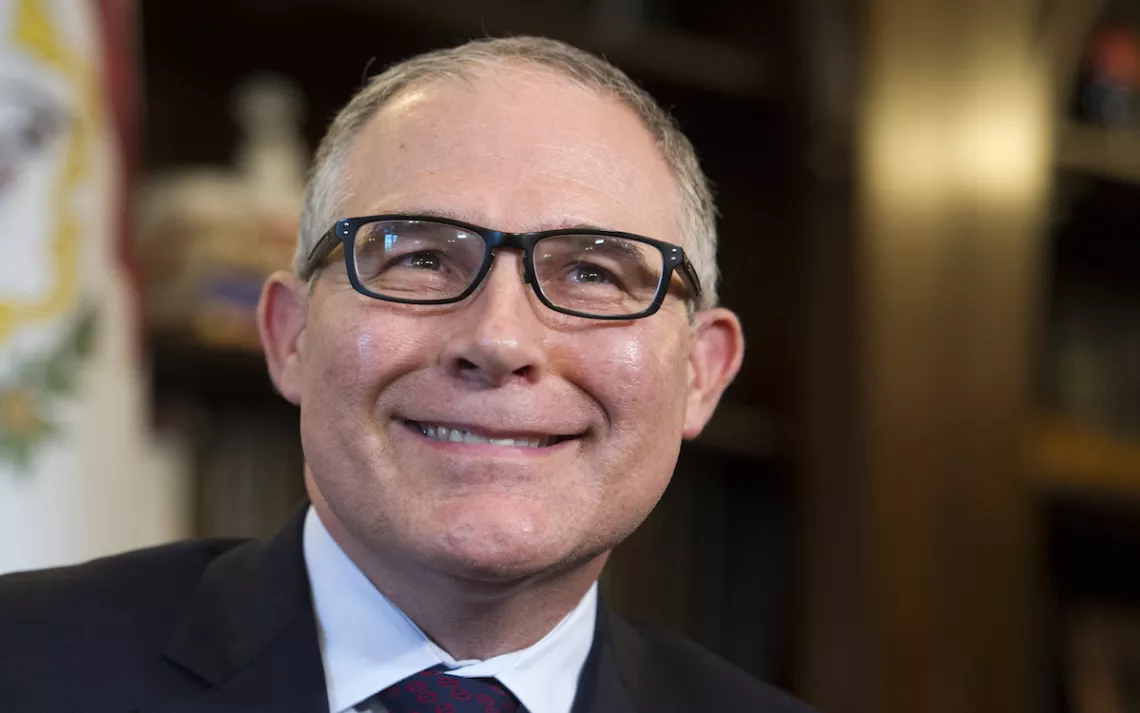
EPA administrator-designate Scott Pruitt on Capitol Hill, January 4, 2017. | Photo by AP Photo/Cliff Owen
The days are as short as they ever get, most people are enjoying time off with friends and family, and the calendar is about ready to flip over. Must be the season for another installment of “The Most Important Environmental Stories” of the year.
“Most important” doesn’t necessarily mean biggest. For that, we can put our trust in Google Analytics. Rather, these are the environmental happenings that were emblematic of 2017, and which are likely to play out for years to come.
So, without further ado . . .
 Photo by KSwinicki/iStock 1. Fires, Winds, and Rains of Biblical Proportions
Photo by KSwinicki/iStock 1. Fires, Winds, and Rains of Biblical Proportions
For more than a decade now, at least since Hurricane Katrina destroyed a good chunk of New Orleans, climatologists have been warning that global climate change will exacerbate extreme weather events. In 2017, that warning became impossible to ignore.
First there was Hurricane Harvey, which dumped an unbelievable amount of rain on the Houston area, causing floods that destroyed at least 12,000 homes and damaged more than 200,000, for a total of $180 billion in damages. On August 30 alone, one Texas town measured more than 50 inches of rainfall. Then Hurricane Irma slammed into Florida, followed by Hurricane Maria, which slashed across the island of Puerto Rico, knocking out the territory’s electrical grid and causing the longest blackout in U.S. history. The hurricane and its aftermath likely contributed to more than 1,000 deaths.
At one point in early September, no fewer than three hurricanes were churning across the South Atlantic and Caribbean, a sight that left NASA meteorologists struggling for words to describe the unprecedented phenomenon.
After the rains came the firestorms. In early October, hot, dry “Diablo winds” sparked a cluster of wildfires that tore through Northern California with lightning speed. At least 42 people died in the fires, which consumed some 8,400 structures and fueled a housing crisis in the counties north of the San Francisco Bay. Then, in December, fires burst out in the hills surrounding Santa Barbara, California. There was a new wave of evacuations and public health warnings about toxic smoke in the air. According to some climatologists, the size and ferocity of the fires and their unprecedented timing (wildfires at Christmastime!) are connected to global warming.
And those are just the North American unnatural disasters. Although the events didn’t get much attention in the United States, 2017 also saw epic flooding in Bangladesh (at one point a third of the nation was underwater) and a heat wave that scorched southern Europe and contributed to massive fires in Portugal.
Scientists now say there are clear connections between rising greenhouse gas emissions and extreme weather events. For the first time, in 2017 the annual report of the American Meteorological Society concluded that the extremity of some weather events would not have been possible “without the influence of human-caused climate change.”
This past year made one thing abundantly clear: It is no longer accurate to describe global climate change as some future threat. Global warming and its super storms are now a clear and present danger.
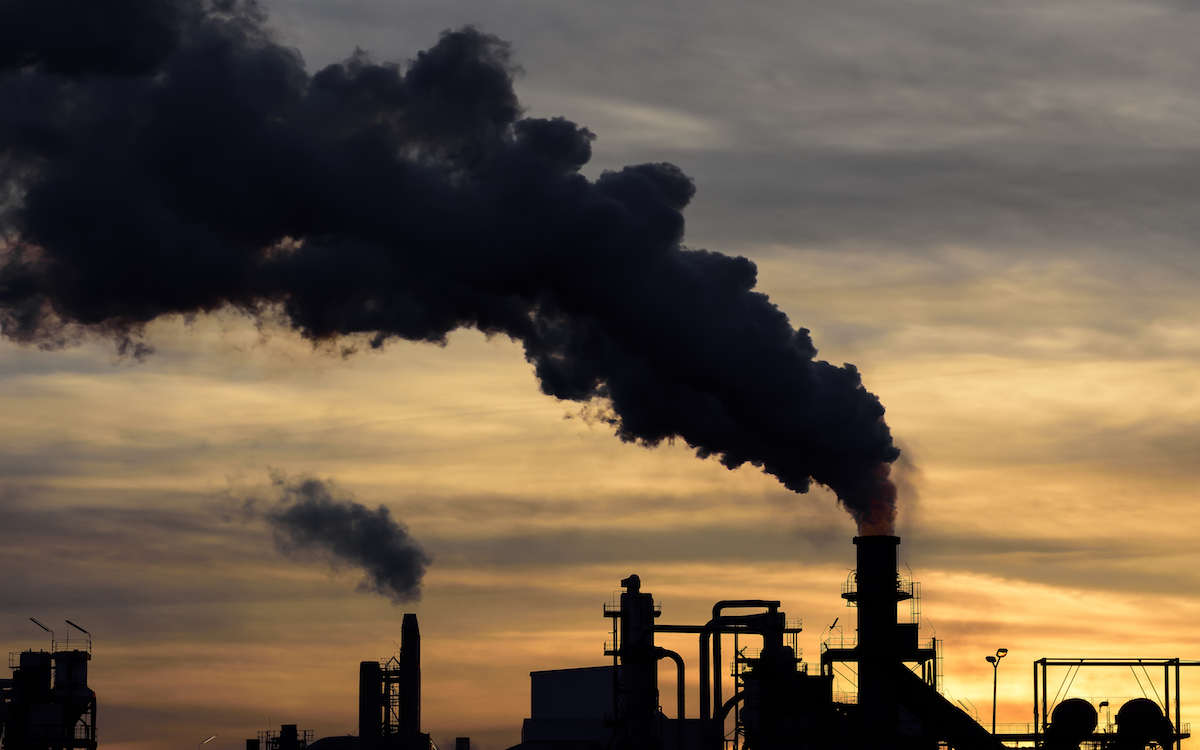 Photo by rui_noronha/iStock 2. Au Revoir, Paris Agreement. So Long, Clean Power Plan.
Photo by rui_noronha/iStock 2. Au Revoir, Paris Agreement. So Long, Clean Power Plan.
Climate change’s impacts might be self-evident to most scientists and a majority of Americans, but President Donald Trump and key members of his cabinet show no signs of abandoning their willful ignorance about this existential danger.
In June, Trump made a big deal out of his intention to withdraw the United States from the Paris climate agreement, the 2015 international deal to ratchet down greenhouse gas emissions and limit average global temperature rise to 1.5 degrees Celsius. Speaking in the White House Rose Garden, the president said, “I cannot in good conscience support a deal that punishes the United States, which is what it does. . . . The bottom line is that the Paris accord is very unfair at the highest level to the United States . . . so we are getting out.”
Not a word of this is true (Trump being demonstrably the most lying-est lying president). The Paris Agreement, unlike earlier international climate agreements, puts significant responsibilities on all major emitters—India and China as well as the European Union and the United States. Also, under the terms of the agreement, the U.S. can’t leave the compact until 2021, so for now we are still, technically, in.
But Trump’s announcement was still a geopolitical earthquake, as it made perfectly clear that the administration has no intention of fulfilling its obligations to address greenhouse gas emissions. In October, the Trump administration turned its know-nothing braggadocio into policy action when EPA administrator Scott Pruitt announced that his agency would be rewriting (make that rendering meaningless) the Clean Power Plan, the Obama-era rule that was the centerpiece of U.S. efforts to staunch carbon pollution.
With the U.S. political leadership now completely MIA, it’s up to China and the European Union to spearhead the fight against global warming. Thankfully, that’s exactly what they are doing. In November, international climate negotiators met in Bonn, Germany, and reiterated their commitments to lower greenhouse gases. And what did the official U.S. delegation do? It hosted a panel promoting fossil fuels, especially coal. Civil society groups and delegates from other nations responded with heckles and jeers, confirming that, when it comes to the greatest danger of our generation, the United States government is a laughingstock.
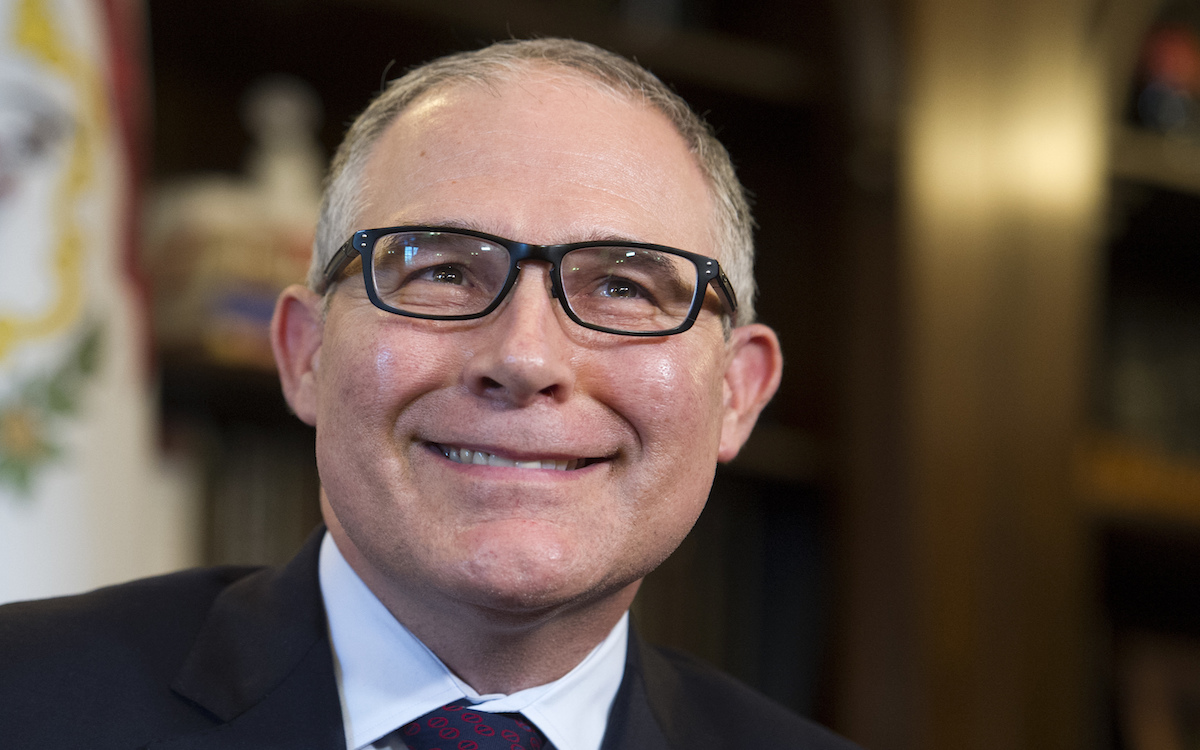 Photo by AP Photo/Cliff Owen 3. Pruitt Dismantles EPA, Shills for Fossil Fuel Industry
Photo by AP Photo/Cliff Owen 3. Pruitt Dismantles EPA, Shills for Fossil Fuel Industry
Probably not since James Watt was interior secretary during the Reagan administration has there been a cabinet official so hostile to the environmental responsibilities of his office. I’m of course talking about Scott Pruitt, Trump’s pick to head the Environmental Protection Agency.
When he was the attorney general of Oklahoma, Pruitt sued the EPA no fewer than 13 times and bragged on his LinkedIn page that he was the “leading advocate against the EPA’s activist agenda.” He is a vocal climate science denier who, in an interview earlier this year, told CNBC, “No, I think that measuring with precision human activity on the climate is something very challenging to do, and there's tremendous disagreement about the degree of impact. . . . So no, I would not agree that it [CO2] is a primary contributor to the global warming that we see.”
So environmentalists’ expectations for Pruitt have been very low. But still he’s managed to do more harm than the most pessimistic feared.
Aside from his planned rollback of the Clean Power Plan, here are some other anti-environmental actions that the head of the EPA has attempted. Last spring, Pruitt denied a petition to ban a pesticide called chlorpyrifos from being sprayed on food, even though the agency’s own scientists had concluded that the chemical can impact brain development in fetuses and infants. (Pruitt’s decision came just weeks after he met with the CEO of Dow Chemical, maker of chlorpyrifos.) He has sought to delay defending a 2012 rule that limits the amount of mercury, lead, and other toxins that come from power plants. He is working on delaying a rule intended to reduce fugitive methane emissions from oil and gas rigs; is considering loosening the fuel economy rules for cars and trucks; and has managed to scrub information about climate change from many government websites. And along the way he is dismantling the EPA from within, sparking a crisis in morale that has led to the departure of at least 700 career staffers. (If you need a scorecard to follow along at home, see this rundown from Politico.)
At the risk of indulging in pop psychology, I have a feeling that Mr. Pruitt may sense he’s on the wrong side of history—or else he has one hell of a martyr complex. How else to explain his intense paranoia? Since becoming EPA administrator, Pruitt has paid for his office to be swept for surveillance devices; dramatically increased the size of his security detail to an unprecedented level; asked for a $25,000 secure phone booth to be installed in his office, even though there is already a facility like that at the EPA HQ; and contracted a dark-arts PR firm to do surveillance on his own employees.
Pruitt evidently believes that there are enemies all around him, eager to halt his agenda. And in that he’s not wrong—because there is a growing movement of Americans determined to turn away from fossil fuels and spur a transition to a clean energy economy.
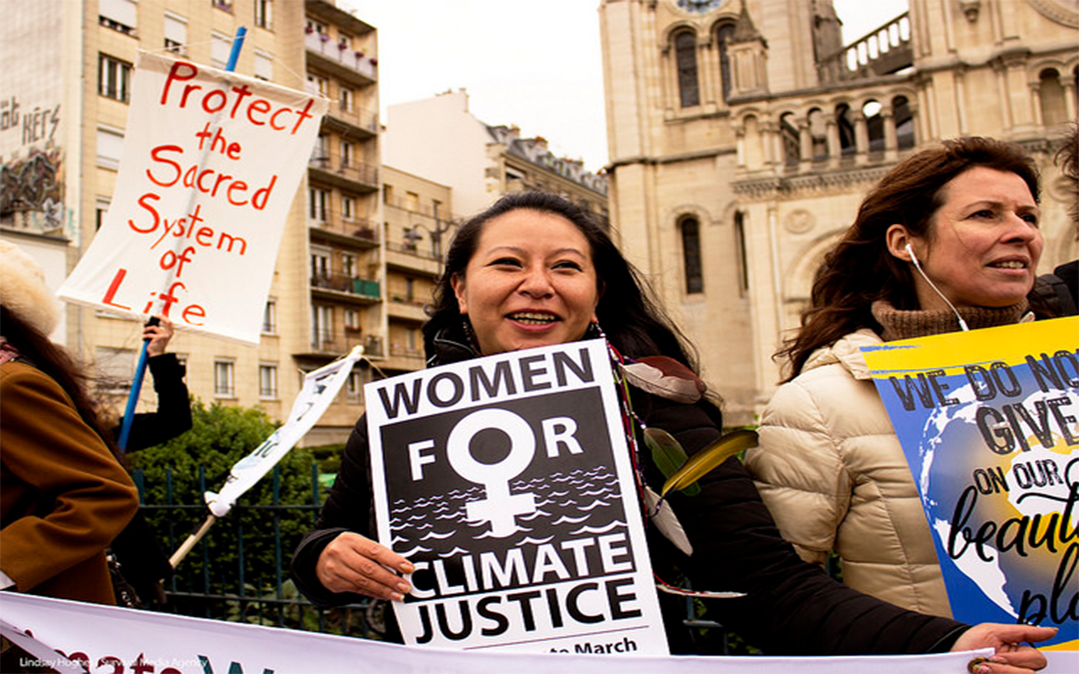 Photo courtesy of the Women's Environment & Development Organization 4. A Movement on the Move
Photo courtesy of the Women's Environment & Development Organization 4. A Movement on the Move
Newtonian physics say that for every action there is an equal and opposite reaction, and this natural law also holds true for politics. The Trump administration’s attacks on everything from climate policy to public lands and waters have re-energized the U.S. environmental movement as millions of Americans take action.
In 2017, this energy manifested itself on the streets, as hundreds of thousands of people across the United States rallied to demand a sane response to the climate crisis. On Earth Day, massive crowds hit the streets during the March for Science. Then, just a week later, the boulevards of Washington, D.C., were packed again for the People’s Climate March. And don’t forget the epic Women’s Marches that occurred the day after Trump’s inauguration as masses of people coast to coast demonstrated the potency of a new resistance.
Those grassroots efforts include #WeAreStillIn, a campaign by cities, businesses, and other institutions to remain committed to the Paris Agreement. Dozens of cities have joined the Sierra Club’s “Ready for 100” campaign and made pledges to eventually get all of their energy from renewable sources. Big corporations like Mars Inc. and Google are making new efforts to reduce their environmental footprints.
Even some investors are getting on board this civil-society life raft. For years, environmental groups, led mostly by 350.org, have been urging private and institutional investors to pull their money out of fossil fuel stocks as a way of taking away the oil, gas, and coal companies’ “social license.” In 2017, the fossil fuel divestment campaign enlisted some powerful new allies. In October, more than 40 Catholic institutions announced they would divest from fossil fuels. Then, in November, Norway’s central bank announced that it, too, would be moving to sell off its shares in oil and gas companies. Norway’s sovereign wealth fund is the largest in the world, controlling some $1 trillion of assets, and the announcement sent some oil and gas stocks tumbling. Finally, in December, New York governor Andrew Cuomo said he was directing the state comptroller to “decarbonize” the Empire State’s investments. Not to be outdone, New York City officials quickly announced they would begin investigating avenues for “ceasing additional investments in fossil fuels, divesting current holdings in fossil fuel companies, and increasing investments in clean energy.”
Trump might not be paying attention (he’s never been all that great of a businessman, after all), but when it comes to fossil fuels, the smart money is heading for the exits.
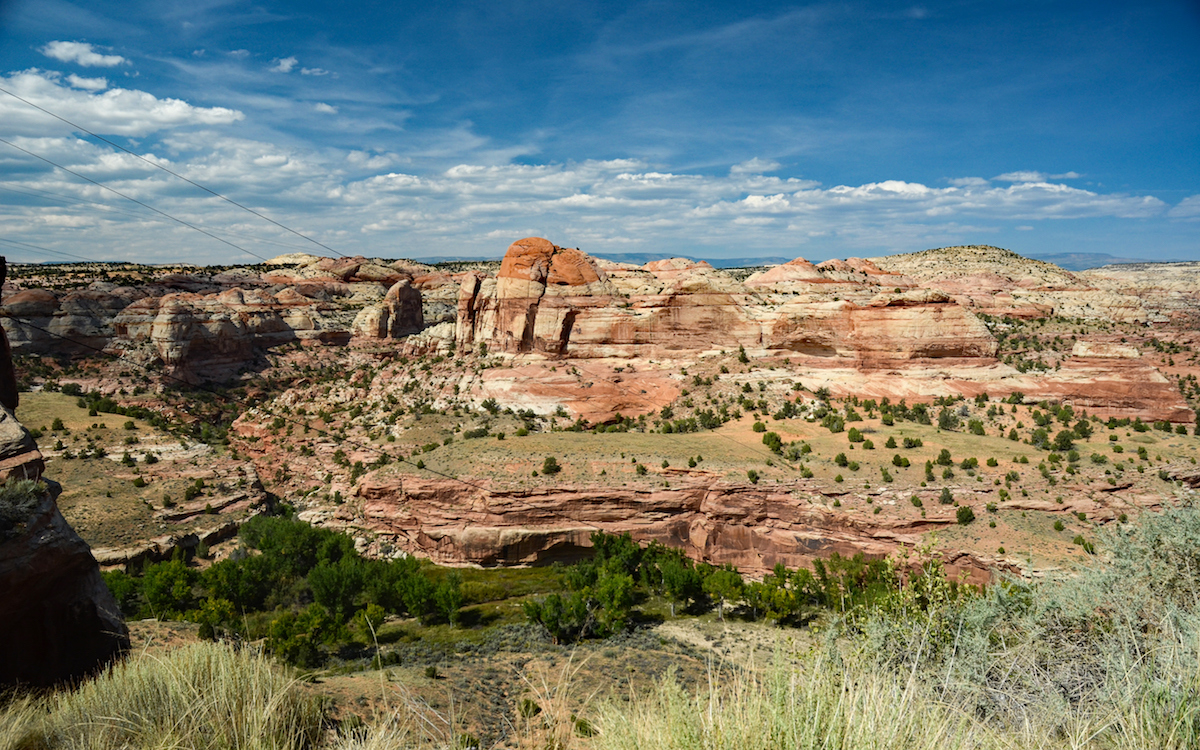 Photo by scgerding/iStock 5. Monumental Public Lands Attack
Photo by scgerding/iStock 5. Monumental Public Lands Attack
The Grand Canyon, Death Valley, Grant Teton, Mount Lassen, Glacier Bay, Zion Canyon—these are just some of the places that owe their original preservation to the Antiquities Act. For more than a century, U.S. presidents have used the Teddy Roosevelt–era law to establish national monuments and protect some of the most iconic landscapes in America. Then came President Trump and Interior Secretary Ryan Zinke.
Last April, Trump directed Zinke to undertake an unprecedented review of national monuments established in the last 20 years that are more than 100,000 acres in size, and to then make recommendations about whether they should be revoked, downsized, or otherwise modified. Zinke spent the summer barnstorming the country’s public lands with his signature faux–Teddy Roosevelt swagger, then in August delivered his recommendations to the president—though he did not share his conclusions with the public.
In December, Trump made good on his promises to anti-government voices in Utah when he signed executive orders slashing Bears Ears and Grand Staircase–Escalante National Monuments. Trump wants to reduce Bears Ears from 1.35 million acres to 228,000 acres and split it in two pieces while cutting in half Grand Staircase–Escalante and dividing it into three sections.
Trump’s plan is by far the largest reduction of protected areas in U.S. history.
Note that I wrote plan. Because it’s not at all clear whether the president even has the authority to dramatically roll back a national monument created by a predecessor. According to many legal scholars, the Antiquities Act only gives the president the ability to establish national monuments, not abolish them; Congress has reserved for itself the right to change existing monuments. Native American nations, led by the Navajo Nation, are challenging the monument rollback in court, as are conservation groups like the Sierra Club. The issue will likely be held up in legal appeals for years.
In the meantime, 2018 is likely to see other attacks on national monuments—and on public lands in general. Zinke’s recommendations to the president also call for downsizing, by unspecified amounts, four other national monuments: Cascade-Siskiyou on the Oregon-California border, Nevada’s Gold Butte, and two oceanic monuments, Pacific Remote Islands and Rose Atoll. Zinke has also floated the idea of dramatically raising fees at the most popular national parks, which has sparked a major backlash.
Teddy Roosevelt? Really, brah?
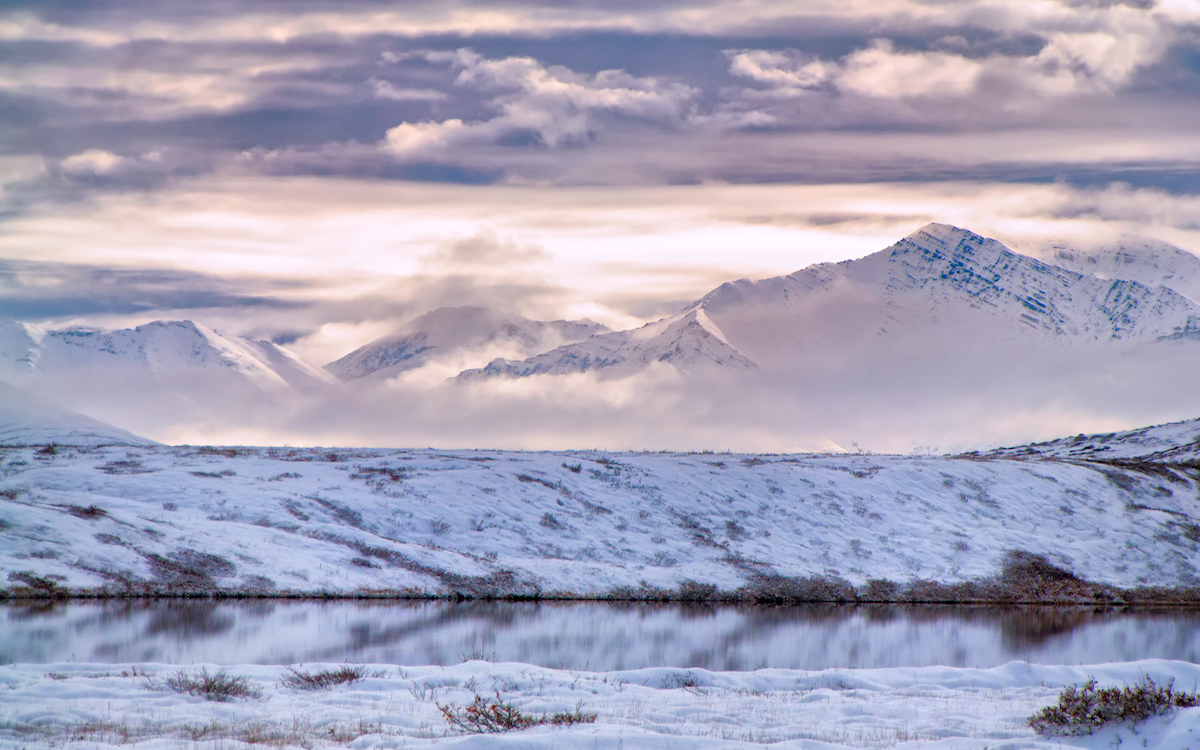 Photo by troutnut/iStock 6. Arctic Nightmares
Photo by troutnut/iStock 6. Arctic Nightmares
For decades, environmentalists and Alaska Natives have played a long, masterful game of defense to keep oil drilling out of the Arctic National Wildlife Refuge, one of the last great wildernesses on Earth. During the George W. Bush administration, the fight over the fate of the Arctic refuge was perhaps the most consuming environmental battle. But in 2017, Senator Lisa Murkowski, the Alaska Republican, finally fulfilled her career-long goal of opening up the refuge to drilling.
The execrable tax bill passed on the eve of Christmas by the House and Senate includes a provision that would allow for fossil fuel extraction in the refuge’s 1002 area. That’s bureaucratese for a 1.5-million-acre chunk of the refuge’s coastal plain, a vast tundra that is the summertime home to epic flocks of birds and the breeding ground of the Porcupine caribou herd. In short, it is now lawful for oil and gas exploration to begin in the Arctic refuge.
But, much like the administration’s attack on the Paris Agreement, this might be a case of ideology trumping good sense. A year-end oil and gas lease sale in the National Petroleum Reserve-Alaska (the unfortunately named Arctic refuge’s twin to the west, very likely the wildest place in North America) was a total bust. The BLM was offering up 900 tracts covering some 10 million acres. But oil companies only bid on seven of the available parcels. The auction took just 10 minutes.
The tepid response from the oil majors reveals the ridiculousness of Republican claims that drilling in the Arctic refuge would raise a billion dollars or more of federal revenue (that was the claim they made to justify including the provision in the tax bill). At current market rates, if the government were to lease every single acre of the coastal plain, it would raise as little as $37 million in revenue. That’s .0009 percent of the federal government’s $3.8 trillion budget. The oil industry’s ambivalence about drilling in the NPRA is yet more evidence that, when it comes to extreme fossil fuel development, the smart money is leaving.
Conservation groups and Alaska Natives have pledged to continue their resistance to drilling in the Arctic refuge. It will take a few years for even a lease sale to happen. This fight ain’t over yet.
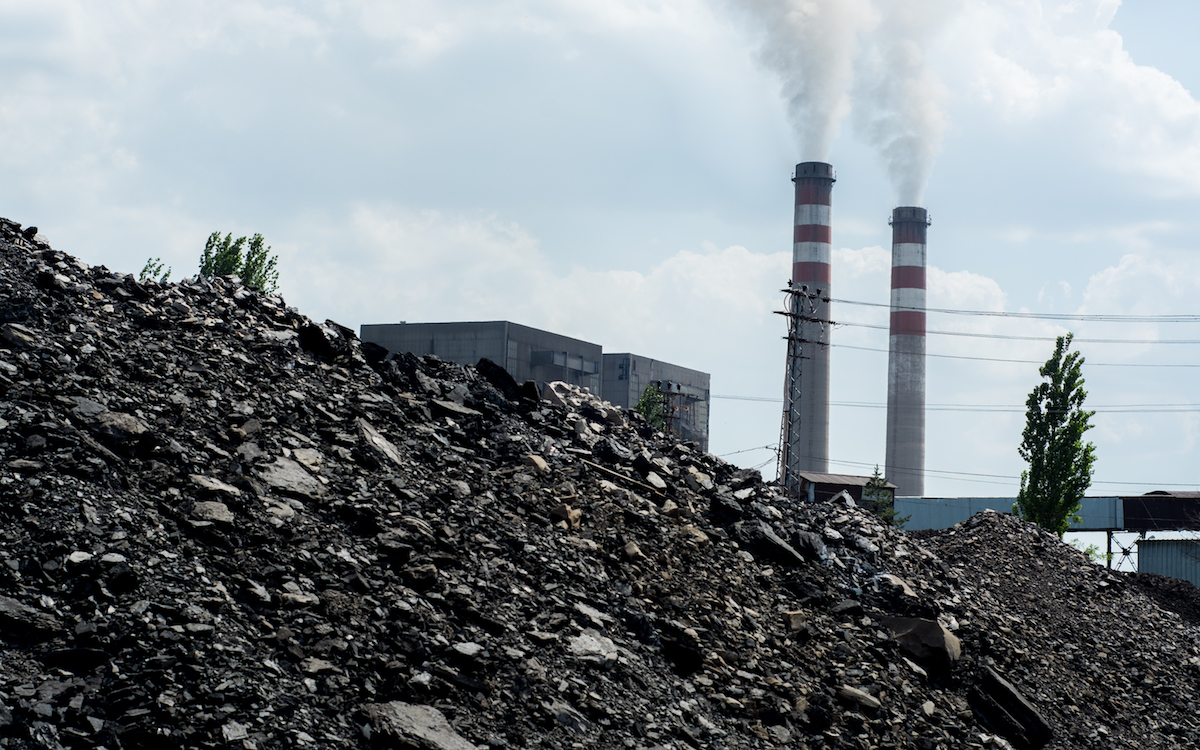 Photo by ilkaydede/iStock 7. Driving Toward Ruin
Photo by ilkaydede/iStock 7. Driving Toward Ruin
If oil companies were to ever actually start drilling in the Arctic refuge, that petroleum would, of course, go into our cars. It’s important to keep that in mind, not least because in 2017 it became clear that automobiles have overtaken power plants as the number one source of U.S. greenhouse gas emissions.
There’s some good news here, and some bad news, too.
First the good news: This occurred partly because U.S. electricity generation has gotten so much cleaner during the past decade. Since 2010, more than half of U.S. coal-burning power plants have retired or committed to retire, thanks in large part to the Sierra Club’s Beyond Coal campaign. Gas plants, which are somewhat cleaner than coal facilities, have taken a larger share of the pie. Renewables like wind and solar are booming.
Now the bad news: Americans' seemingly intractable love affair with gas-guzzling SUVs, trucks, and crossover vehicles means that automotive emissions are on the rise again after plateauing for several years. Some more bad news: The ascendance of automotive emissions (relative to power plants) also makes the move toward decarbonization more complex. While there are only about 8,000 power plants in the United States, there are some 253 million cars on the road. Replacing that massive fleet with electric vehicles (or getting over cars and getting on the bus and the train) will require a huge amount of economic and political will—something that the U.S. clearly lacks right now.
So keep your eyes on the road: Americans’ willingness to change their automobile and transportation choices will play a decisive role in transitioning to a clean energy economy.

Photo by janifest/iStock 8. Electric Avenue
In the United States, sales of electric vehicles are just barely 1 percent of the total automobile market. Other countries, however, are putting the zero-emission pedal to the metal. In Sweden, EVs account for about 3 percent of all auto sales; in the Netherlands it’s 6 percent; and in Norway an incredible one-third of new car sales are EVs.
In 2017, a number of countries announced big, new commitments to accelerate the transition to zero-emission cars. In July, the United Kingdom announced it would ban new sales of gas and diesel vehicles starting in 2040. The French government then quickly announced that it would match that goal. India is even more ambitious: This year it announced that all automobiles sold in the country should be EVs by 2030. Norway says all new cars sold there will be zero-emission by 2025.
Within a generation, the internal combustion engine will be a thing of the past.
 Photo by KarelGallas/iStock 9. Grizzly Bears Still on the Brink
Photo by KarelGallas/iStock 9. Grizzly Bears Still on the Brink
American grizzly bears experienced another roller coaster year in 2017 as their protection status remained in doubt. In June, Ryan Zinke’s Interior Department took the final step, started by the Obama administration, of removing from the endangered-species list the 700 bears that live in the Greater Yellowstone Ecosystem. The delisting decision opened the way for the states of Idaho, Montana, and Wyoming to start laying plans for a bear trophy-hunting season in the areas surrounding Yellowstone National Park.
(Please pause here to consider that, in comparison to those 700 bears, there are about 45,000 humans living in Bozeman, Montana, alone, and 300-million-plus people in the United States as a whole.)
But then, in December, the U.S. Fish and Wildlife Service took the unexpected and unusual step of reopening a public comment period on the bear delisting. The USFWS decision came after a federal appeals court criticized the agency for insufficiently considering the ecological impact of a partial delisting of wolves in the Great Lakes region. The appellate court’s unanimous decision in the wolf case established a precedent that affects other USFWS decisions, and so forced the agency to reconsider how it handled the bear delisting.
While the USFWS and state wildlife officials in the Rockies still consider whether to remove the grizzly from endangered-species protection, the appellate court decision and the USFWS’s partial reversal has given new legal ammunition to the conservation and wildlife groups who were already suing to halt the bear delisting.
The bear tug-of-war is just one example of a broader antipathy within the Trump administration toward the Endangered Species Act and wildlife. On his first day in office, Interior Secretary Zinke repealed an Obama-era rule requiring hunters and anglers to use non-lead ammunition and tackle in national wildlife refuges. In September, Zinke moved to scrap a carefully constructed (and bipartisan) plan to protect the greater sage-grouse. Of the 39 endangered-species petitions that have come before the Trump administration, 29 have been denied.
But there’s also some good news! British Columbia has decided to end its grizzly bear hunting season, calling it “socially unacceptable.”
 Photo by damiangretka/iStock 10. Monsanto on the Ropes?
Photo by damiangretka/iStock 10. Monsanto on the Ropes?
And now, finally, what I think is the sleeper story of the year: public health, environmental, and agricultural regulators’ increasing skepticism toward some of the best-selling herbicides on the market.
This fall, chemical and seed company Monsanto came just three weeks away from having its best-selling herbicide, glyphosate (also known by its brand name, Roundup), banned in the European Union. More than a million Europeans signed a petition calling for the chemical to be banned, and EU commission members were facing intense lobbying from Monsanto and Bayer on one side and citizens on the other. In a November vote, EU officials decided to allow sales of the week killer for another five years. This was a defeat for watchdog groups that wanted a complete ban but also a setback for Monsanto, which was seeking a 15-year license. The fact that the idea of a ban got as far as it did spells future trouble for chemical manufacturers. Meanwhile, in the U.S., Monsanto is fighting California’s plan to put a warning on glyphosate containers that the product may cause cancer.
Monsanto is also engaged in an increasingly tense skirmish with farmers and some state regulators over use of another popular weed killer: Dicamba. In a November decision that sent shockwaves through the U.S. agriculture industry, the Arkansas Plant Board (yes, Arkansas) voted to prohibit the use of Dicamba throughout the 2018 growing season. The decision came in response to outrage from farmers who had lost thousands of acres of crops due to Dicamba drift. In 2017, Missouri and Minnesota also put in place restrictions on Dicamba. Grassroots pushback from farmers reveals a new willingness by at least some growers to challenge Monsanto’s imperiousness.
To be sure, we’re a long way from a phase-out of dangerous on-farm chemicals. But in 2018, as in past years, food and agriculture will continue to be a focal point for those who care about the environment.
Unfortunately, there was more bad news than good this year. I think that’s a reason to toast Happy New Year!
 The Magazine of The Sierra Club
The Magazine of The Sierra Club



